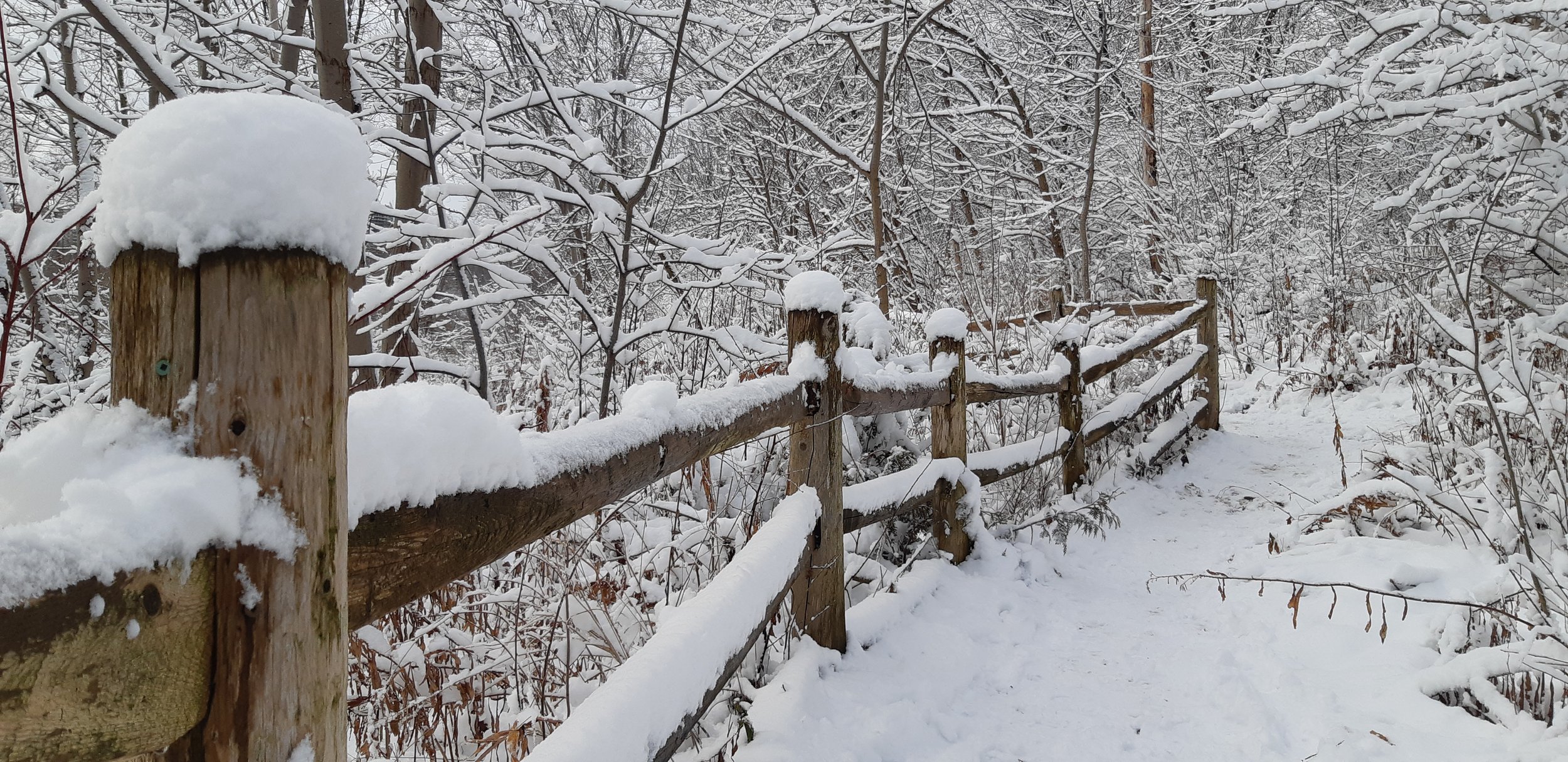Snow Jobs and Snow Stories
By Jacqueline L. Scott, Safina Center Senior Fellow
Winter in Canada. Photo by Jaqueline L. Scott
Winters are long, white, and cold in Canada. We are the land of the Great Outdoors and the Great White North. Skiing and snowshoeing are fun; and this playing in the snow, turns winter from a season to endure, to a season to enjoy.
The beauty and magnificence of our winter landscapes are captured in the paintings by the Group of Seven artists. Their art shows up every year on postcards and Christmas cards. Sometimes on cookie and chocolate boxes too. I have skied and snowshoed in some of the places created in the paintings.
Each winter, I also snowshoe or cross-country ski in the ravine where I volunteer as a land steward (weeding out invasive species and replanting with native ones). Outdoor recreation is a key route to conservation and caring about the environment. This winter, near the edge of the woodlot tinging with sunshine, I watched a bouquet of cedar waxwings feed on the sumac trees full of red berries, bright against the snow.
The author, enjoying a snowy day outdoors. Photo by Jacqueline L. Scott
Snow is free. Yet, in skiing and snowshoeing, it is usually white faces that mess about in the stuff. Black faces are noticeable by their absence. Winter outdoor activities, like so much else in outdoor recreation, are racialized hobbies. My PhD research is on Black outdoors: perceptions of the wilderness in the Black imagination. A section of it is on the Black experience in snow-based recreation.
Skiing is expensive and takes time to learn, especially downhill skiing in resorts. Add the other costs—fees, equipment, specialized clothing, and distance—and these contribute to the paucity of Black faces frolicking in the snow. Another equally important factor is the cultural representation of snow sports and recreation.
Take the Olympic Games for instance. In USA and Canada, white athletes dominate the winter games, and Black athletes the summer ones. This is not by accident. Rather, it reflects assumptions about which bodies are best suited for winter and which for summer. Thus, Black skiers are seen as a surprise, as out of place, in winter sports and recreation. James Baldwin experienced this in his classic essay A Stranger in the Village—where the white villagers wet themselves in anticipation of watching the spectacle of a Black man attempting to downhill ski.
A red-tail hawk flew into the woodlot and perched on a branch. A cottontail rabbit bolted. No streaks of red on the snow today, the rabbit lives another day. I watched and waited. Soon enough, the hawk’s mate flew into the same tree. The minutes melted away, only my cold hands encouraged me to move along on my snowshoes.
Traveling by snowshoe. Photo by Jacqueline L. Scott
Snowshoeing is low-cost and easy to learn compared to skiing. It can be done anywhere there is snow, including in city parks and urban ravines. Snowshoes are an old technology, developed by Indigenous people millennia ago, to travel through their land of snow. As transport and for recreation, they are an efficient way of moving through the deep white stuff. Snowshoeing was once the main winter outdoor recreation activity in Canada, before hockey and skiing took over. The dominance of the latter is a good example of recreational colonialism.
There has been an enormous increase in the number of people trying winter outdoor activities—skiing, snowshoeing, and walking in the woods—for the first time. The coronavirus pandemic encouraged us to explore nature, and by doing so underlined how much humans need nature. We are part of it; not above it or separate from it.
There has also been a huge increase in grassroots organizations—such as Colour the Trails and Brown Girl Outdoor World—leading these winter activities for members of their own communities. This is one way of bypassing the roadblocks created by the whiteness of skiing and other outdoor recreation activities. There is a precedence—the National Brotherhood of Skiers. Since 1973 this African American ski club, with its 50 chapters, has introduced thousands of Black people to the joys of playing in the snow. The Joy Trip Project has just launched the Matthew Henson Polar Explorer Scholarship. It honors the African American co-explore of the North Pole in 1909.
The robins are still around in the woodlot, flocking near the red-osier dogwood shrubs, though they are songless in the months of snow. There is no point in wasting energy advertising one’s fitness, and readiness for sex, when the cold rules the land and eggs need the warmth of spring.
I raised my foot, took another step in my snowshoes, and climbed up the rolling hill in the woodlot. There is less snow in the ravine each year, just like in the rest of the city. The climate crises are evident in the ravine, mainly due to the unpredictability of the weather. The seasons do not arrive, behave, or leave on time. As I trek through the snow, my eyes twitch about looking for birds. I did not see it, but I heard a woodpecker drumming against a tree. It was either a downy or hairy, as these small ones favor this woodlot.
Some Black men once snowshoed about 500 miles or 1,000 kilometers across Canada, in about 50 days. They pulled a toboggan behind them as they raced through the deep woods and snow in 1813. One day I hope to recreate some of their journey: for the adventure, and as part of reclaiming the Black history in snow-based outdoor recreation. It is also about taking up space in winter, on our shared snowy land of ‘we the north.’



